 It was the early 80s and I was in second grade. I went to a school way out in the sticks called Trafton Elementary, which was a classic early 1900s white box with 4 classrooms (1st grade – 4th grade) and a bell on top to call the kids in from recess. To give you an idea how far out this school was, the “proper” school within city limits was a 25 minute bus ride away. The nice thing about going to this school, aside from the forest you could play in during recess and the bell on top you could ring (if you were good), was the fact that you went up from 1st grade to 4th grade with the very same 20 kids you met on day 1.
It was the early 80s and I was in second grade. I went to a school way out in the sticks called Trafton Elementary, which was a classic early 1900s white box with 4 classrooms (1st grade – 4th grade) and a bell on top to call the kids in from recess. To give you an idea how far out this school was, the “proper” school within city limits was a 25 minute bus ride away. The nice thing about going to this school, aside from the forest you could play in during recess and the bell on top you could ring (if you were good), was the fact that you went up from 1st grade to 4th grade with the very same 20 kids you met on day 1.
The schoolhouse still exists, but they have razed the forest area behind the school where the kids used to play, surrounded the old building with a number of “portable classroom units”, and crowded 3 more grades and tons more kids into that school. A shame really, but it was either that or tear it all down and built a modern monolithic school.
Anyway, back to my point here… I remember the day we all got on a bus and rode 20 minutes to “the big city” school to participate in the R.I.F program (Reading Is Fundamental). RIF was great because each kid would pile into the gym and look over tables full of books and get to pick one they could keep… free. There were some new books, but most were donated or picked up from libraries getting rid of their beat up copies. It was on this day I discovered Choose Your Own Adventure books. My life changed forever that day.
These books were simply amazing to me. You could read a page or two, then make a choice and turn to a specific page and continue reading down a different story path. I made several RIF trips over my second grade and third grade school years, looking for more CYOA books… but the last trip I made before RIF was shut down was the best one ever. I came across a Choose Your Own Adventure book where the choices were based on computer code. You had actually program a computer by manually typing in the BASIC code and run the program to find out which choice was best to make. This was the first time I had ever heard of such a thing.
This book was different, and I knew it. In it were lists of strange stencil block letters, prefixed with an incrementing set of numbers. The first choice seemed fairly straight forward though:
10 CLS
20 INPUT “Do you want to jump the ravine? YES or NO?”;Q$
30 IF Q$ = “YES” THEN GOTO 60
40 PRINT “Turn to page 32.”
50 GOTO 70
60 PRINT “Turn to page 24.”
70 END
That first example almost seemed readable to me. I could see that the computer was going to ask me a yes or no question, and if you told it YES, it was going to tell me to turn to page 24. As the book went on, the list of commands got more complex. I realized I needed to get these commands into a computer to make any real progress in the book.
 I noticed that the book listed the same list of what looked like computer commands to me several times, but with different headers and subtle differences in the way the commands were written. The headers were always “IBM PC”, “APPLE IIE”, “COMMODORE 64”. I had no idea what any of it meant, but I had an idea that the unused, untouched, unnoticed PET computer sitting in the corner of the classroom just might have something to do with it. I begged and pleaded with the teacher to let me plug it in and turn it on. I showed the book to her and the lines of commands, and she begrudgingly let me turn it on.
I noticed that the book listed the same list of what looked like computer commands to me several times, but with different headers and subtle differences in the way the commands were written. The headers were always “IBM PC”, “APPLE IIE”, “COMMODORE 64”. I had no idea what any of it meant, but I had an idea that the unused, untouched, unnoticed PET computer sitting in the corner of the classroom just might have something to do with it. I begged and pleaded with the teacher to let me plug it in and turn it on. I showed the book to her and the lines of commands, and she begrudgingly let me turn it on.
From that moment on, I was a computer programmer. I was instantly hooked, poking code into this wondrous machine that magically made its way to the Trafton 3rd grade classroom way out in the sticks. None of the other classrooms in Trafton had a PET, and I didn’t know of any classrooms at the “city” school that had any computers either… it was here just for me, and it was all mine. I spent the remainder of my recess periods that year trying to decipher why some of the commands in the book worked on the PET and why some didn’t. I found a tiny “quick start” PET BASIC manual (leaflet really) sitting under the PET, covered in dust, and started comparing and cross-referencing the commands in the manual with the commands in the book. The joy I felt when I figured out how to correct the code listed in the CYOA book to run on the PET was pure elation. I figured it out! I made the computer do something! Before it just sat there and blinked, but now it was actually DOING something! Something I told it to do! This was amazing! This was wonderful! This was… power!
For the entire rest of the school year (and some of the next), I spent every recess minute poking out my own programs, sometimes taking days to finish. I would constantly be begging the teacher not to turn off the computer after school (there was no storage device attached), and the all too frequent momentary power outages were the bane of my existence.
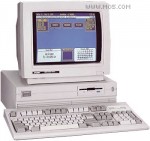 While not in school, I worked my parents over, begging them to buy me a computer! Every PC on the market at the time was around $2000, and my parents told me if I saved up half the money, they would buy it. It took me two years to save around $100, but in 5th grade my parents bought a Tandy 1000 for Christmas. They immediately broke it by deleting a bunch of files from it, and I had to figure out how to fix it. During the remaining years of my required schooling I was helping the school district administration offices with their computers and writing software for fire stations to track training and water usage… the rest is history really.
While not in school, I worked my parents over, begging them to buy me a computer! Every PC on the market at the time was around $2000, and my parents told me if I saved up half the money, they would buy it. It took me two years to save around $100, but in 5th grade my parents bought a Tandy 1000 for Christmas. They immediately broke it by deleting a bunch of files from it, and I had to figure out how to fix it. During the remaining years of my required schooling I was helping the school district administration offices with their computers and writing software for fire stations to track training and water usage… the rest is history really.
So really, it was RIF and CYOA that helped mold me into the guy I am today. Apparently I’m not the only one. This guy took several books and mapped out visually all possible choice paths of each book. It is definitely worth checking out… but I think he ends the article in the best way; The book Inside UFO 54-40 offers an easter-egg of sorts to the curious, rule-breaking reader. There is a rewarding story end that is not able to be reached through any possible path choice. You have to find it by “cheating” and turning directly to it:
The lesson is clearly spelled out, which I think is the ultimate in class:
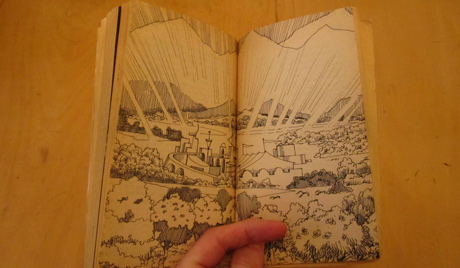
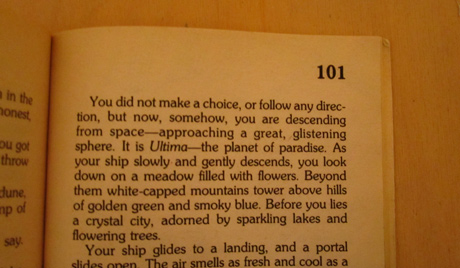
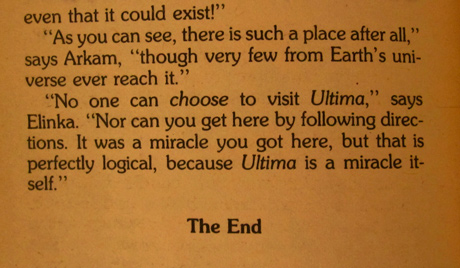
The best part is, he’s also put a digital, readable/playable copy of a classic CYOA book online! I can’t wait to start a new adventure!












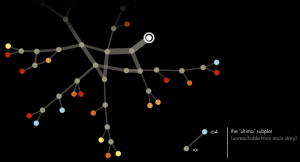

A real life hardcopy version of an exploit! I remember reading CYOA books, mostly in the form of thrillers. Monster something, i can hardly remember, but it brings back great memories.
Yeah, gotta love those things. They have CYOA DVDs now where you can skip around, but its just not the same.
[…] first got started with computers in the 3rd grade, where someone had left a PET computer. I started actually working on other […]